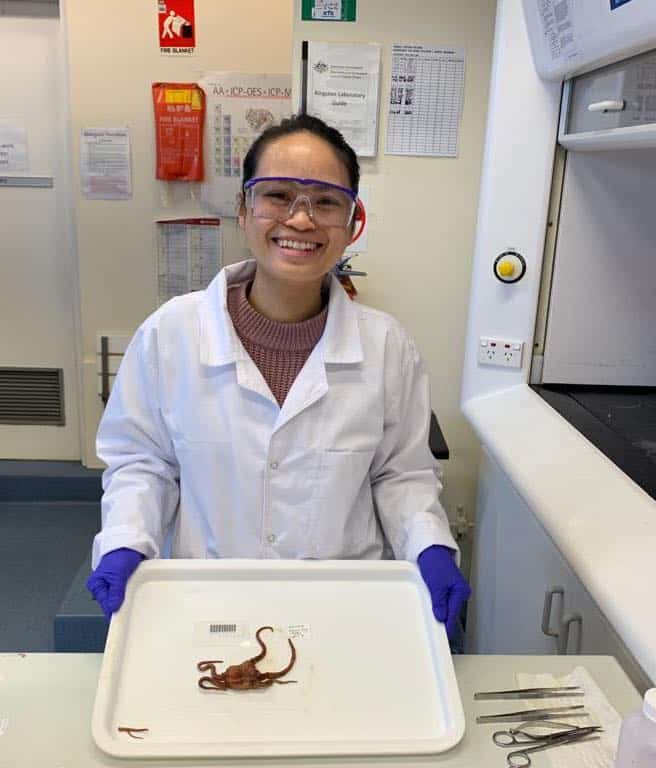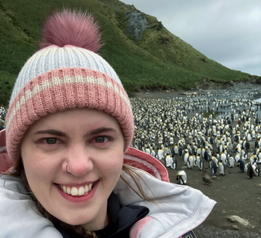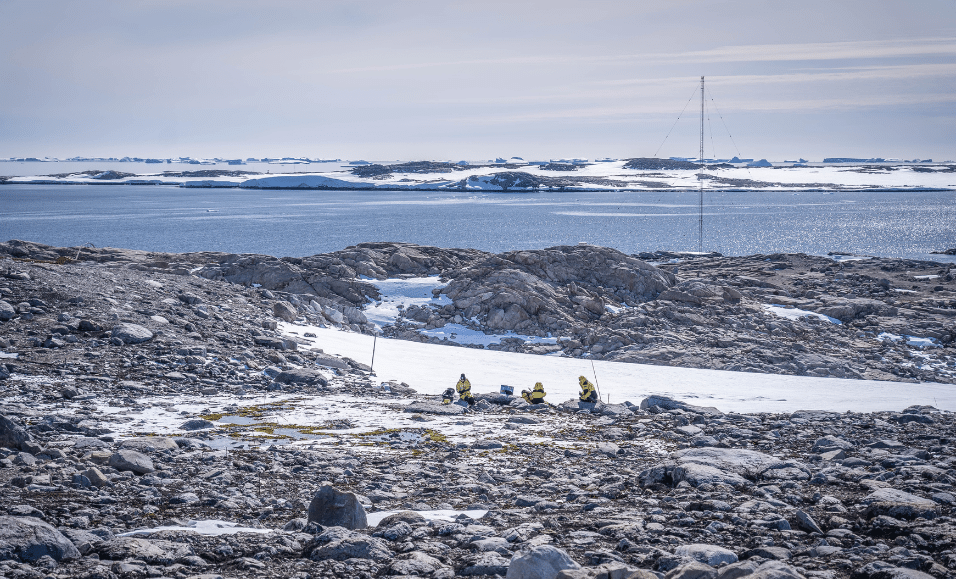New insights into the life history of Antarctic brittle stars

Ophionotus hexactis. Credit: Chester Sands, British Antarctic Survey

Dr Sally Lau with an Antarctic brittle star in the lab. Source: Dr Sally Lau

Ophionotus victoriae. Source: Encyclopedia of Life
Ever arrived at your front door, backpack over one shoulder, a bag of groceries in one hand and a water bottle, coffee cup or other necessary daily ephemera balanced in the other? With no hands to grab your keys, which are somewhere at the bottom of your backpack, surely there is an evolutionary purpose for growing an extra arm?
While humans have not yet benefited from this, an animal that has is the Antarctic brittle star. During the Pleistocene (2 million to 12,000 years ago) as the environment went through an alternating series of glacial and interglacial periods, two species, Ophionotus victoriae and Ophionotus hexactis, diverged from each other. For O. hexactis this included evolving an extra arm.
That wasn’t the only change. They also evolved two different modes of reproducing, O. hexactis broods, giving birth to live young, while O. victoriae broadcasts, spawning larvae. Today, the two species remain very closely related and have gene flow between them in areas where their distribution overlap, but questions remain about what triggered their divergent characteristics.
A team of researchers, including SAEF scientists Dr Sally Lau and Professor Jan Strugnell from James Cook University and Dr Nerida Wilson from the Western Australian Museum have used genomics to investigate the evolutionary history of these two brittle stars. Their research published in Molecular Biology indicates that their evolution is likely linked to the impact of glacial cycles as the ice sheet expanded and retreated over Southern Ocean habitat for thousands of years.
Dr Sally Lau, a postdoctoral researcher from James Cook University who led the study explains understanding evolutionary histories between closely-related species can offer insights into what drives innovations.
“Ophionotus victoriae is mainly found on the Antarctic continental shelf and O. hexactis is mainly found around islands near the Polar Front. They have contrasting reproductive strategies and different arms numbers, yet we are seeing gene flow between them in locations where they overlap. Understanding how and when they diverged will enable us to understand the forces that drive evolution in the unique Southern Ocean,” says Dr Lau.
Some Antarctic brittle stars have circumpolar distribution, which means they can support scientists to answer broad evolutionary questions specific to the Southern Ocean. To conduct the study the team used brittle star samples collected from most of their distribution range from between scuba diving depths and 1750m. Using small tissue samples, they sequenced and analysed their DNA.

The results showed that during glacial maxima as the Antarctic ice sheet expanded, O. victoriae persisted in small populations in ice-free areas. These included deep water habitats and the small number of ice-free areas that remained on the Antarctic continental shelf and around some Southern Ocean islands, such as Scott Island and South Shetland Island. During glacial minima, many of these populations expanded as more favourable conditions returned.
The results also show that their gene flow is linked to the Antarctic Circumpolar Current and other regional oceanic currents, which act like highways connecting populations both near and far. Together, these phenomena are likely to have played a role in shaping the present-day distribution and genetic structure of the brittle stars.
Meanwhile, O. hexactis persisted exclusively in the ice-free areas that remained around Southern Ocean islands. There was also homogeneous gene flow between the populations in the islands situated west and east of Antarctica.
The team also found an association between the brittle stars with the greatest genetic differences and salinity, suggesting that the innovation of six arms and brooding could have been influenced by low-salinity meltwater that would have increased as the ice sheet retreated during interglacial cycles.
In brittle stars, increased arm numbers are related to water-pumping motions which enable transport, escape and coordination. So individuals with a higher number of arms are more mobile, which could reflect the need to adapt to the fluctuating environment as ice sheets, glaciers and ocean currents changed throughout the Pleistocene.
In the same vein, brooding has often emerged under stressful environmental conditions even though it requires greater investment to care for their young compared with broadcasting. Brooding could also be linked to there being less habitat available for larval dispersal during glacial cycles.
“We are still yet to fully understand the evolutionary relationship between these 5 arms/6 arms, brooding/broadcasting brittle stars in the Southern Ocean. Future whole genome studies on them and other Southern Ocean benthic species will enable us to investigate the benthic connectivity and diversity through space and time in this unique and isolated environment,” says Dr Lau.
In the face of climate change, with modern transport like cars, trains, buses and international air travel, humans are unlikely to need that extra arm to move or to breed. But it’s worth remembering that these evolutionary processes occur over hundreds of thousands of years, and with the speed at which humans are causing changes to our environment and climate, we’re unlikely to be giving our biodiversity enough time to adapt.
Read more
Lau S.C., Strugnell J.M., Sands C.J., Silva C.S. & Wilson N.G. (2023) Genomic insights of evolutionary divergence and life histories innovations in Antarctic brittle stars, Molecular Ecology DOI: https://doi.org/10.1111/mec.16951
About the author
Anna Quinn
Anna is SAEF’s the Senior Communications Adviser.


